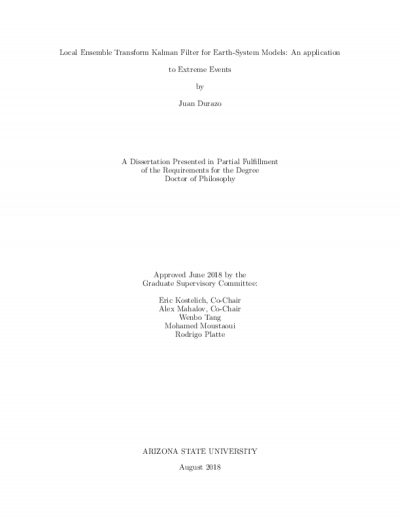Wavelet-Based Multilevel Krylov Methods For Solving The Image Deblurring Problem

Description
In the realm of discrete ill-posed problems, image deblurring is a challenging problem aimed at restoring clear and visually appealing images from their blurred counterparts. Over the years, various numerical techniques have been developed to solve this problem, each offering unique approaches to tackle blurring and noise.This thesis studies multilevel methods using Daubechies wavelets and Tikhonov regularization. The Daubechies wavelets are a family of orthogonal wavelets widely used in various fields because of their orthogonality and compact support. They have been widely applied in signal processing, image compression, and other applications. One key aspect of this investigation involves a comprehensive comparative analysis with Krylov methods, well-established iterative methods known for their efficiency and accuracy in solving large-scale inverse problems. The focus is on two well-known Krylov methods, namely hybrid LSQR and hybrid generalized minimal residual method \linebreak(GMRES). By contrasting the multilevel and Krylov methods, the aim is to discern their strengths and limitations, facilitating a deeper understanding of their applicability in diverse image-deblurring scenarios. Other critical comparison factors are the noise level adopted during the deblurring process and the amount of blur. To gauge their robustness and performance under different blurry and noisy conditions, this work explores how each method behaves with different noise levels from mild to severe and different amounts of blur from small to large. Moreover, this thesis combines multilevel and Krylov methods to test a new method for solving inverse problems.
This work aims to provide valuable insights into the strengths and weaknesses of these multilevel Krylov methods by shedding light on their efficacy. Ultimately, the findings could have implications across diverse domains, including medical imaging, remote sensing, and multimedia applications, where high-quality and noise-free images are indispensable for accurate analysis and interpretation.
Date Created
The date the item was original created (prior to any relationship with the ASU Digital Repositories.)
2024
Agent
- Author (aut): Amdouni, Bechir
- Thesis advisor (ths): Espanol, Malena
- Committee member: Renaut, Rosemary
- Committee member: Platte, Rodrigo
- Committee member: Fricks, John
- Committee member: Moustaoui, Mohamed
- Publisher (pbl): Arizona State University







